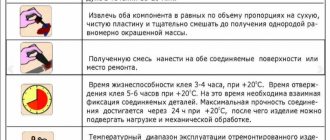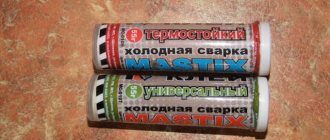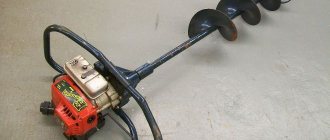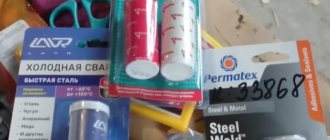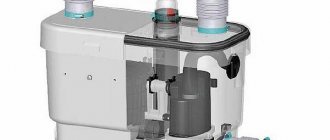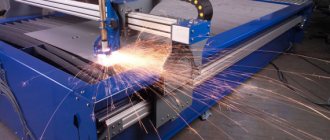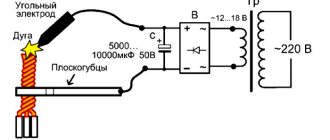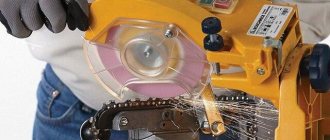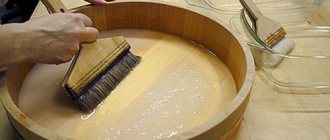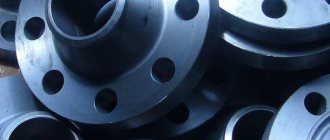Features of the concept
In fact, as can be seen in the photo of cold welding, this is not welding at all, but a method of obtaining permanent connections by gluing metal parts without heating them. For this purpose, a special glue is used, which, when hardened, forms a seam similar to a welded metal one.
The scope of application of cold welding is the following cases:
- A situation where there is a possibility that the metal structure may undergo minor deformation at the weld area.
- The elements that need to be connected have a complex geometric shape.
- The parts to be joined have different textures.
Consumer Reviews
Regarding Almaz, I’d like to add my two cents. I used it to cover the hole in the water barrel. At first I was skeptical about the product, but then I appreciated it. It holds up well, even though my product is about a year out of date.
Marina Stepanovna
I personally didn’t like Remplast. My heated towel rail is leaking. I did everything according to the instructions: a little water, kneaded it, and carefully sealed it. The effect is zero. I don’t know, maybe it would attach normally to a dry surface, but this manufacturer even has a slogan. I don’t remember it verbatim, but the point is that you can seal the pipe directly under pressure. It turned out that this was not the case. I don’t know, maybe it will be useful for other purposes later if it doesn’t dry out completely.
Veronica
I am an experienced welder and I can say for sure that no adhesive can compare with ordinary normal welding.
This is so if, for the first time. Kind of like a temporary filling. I don’t recommend seriously counting on such welding. Kirill
Advantages of cold welding
This method of joining metals has the following advantages:
- high strength of the resulting connection;
- the ability of seams to withstand significant loads;
- the ability to connect the objects being processed, even if they are under the influence of voltage or any liquid;
- versatility;
- speed of the procedure.
Cold welding can be used to glue plastic (with the exception of polyethylene), ceramics, glass and stone surfaces, carpet and linoleum.
This technology is used when carrying out plumbing work and car repairs.
There is only one minus and it is insignificant: the flexible parts being connected become less elastic at the gluing site. This does not apply to hard surfaces.
Technical characteristics of various manufacturers
Let's look at the list of products that are popular in the largest cities of Russia - Moscow and St. Petersburg:
- ABRO Thermometal TM-185 . Country of origin: USA. One-component material for sealing cracks and holes in steel and iron parts. Suitable for use in the repair of automotive components, household heating appliances, and industrial equipment. Contains anti-corrosion additives. It is resistant to petroleum products. Withstands temperatures up to 1316 Cº. Full polymerization time is 24 hours. The recommended layer thickness is 6 mm.
- Adhesive “cold welding” DIAMOND “HEAT RESISTANT” . Product made in Russia. Used to connect various surfaces: ferrous metal, stainless steel, plastic, glass, ceramics, wood. Most effective for repairing batteries, heating radiators and various pipelines. Can be used on wet or oily surfaces. Heat resistance up to 300 Cº. Complete polymerization time – 24 hours. Tear strength – 120 kg/cm².
The above products, among others, can be purchased in the Leroy Merlin network of construction hypermarkets.
Rules for using cold welding
How to use cold welding? The method is quite simple. Let's describe it, taking the repair of a gas tank as an example.
Cold welding, instructions:
- We find the damaged area.
- Drain the contents of the gas tank.
- We clean and degrease the damaged area.
- Preparing the adhesive composition for cold welding.
- Apply glue to the damaged area and, if necessary, apply a metal patch. Press the parts to be glued tightly. The procedure must be carried out quite quickly, because the adhesive mass hardens almost immediately.
- Sand the resulting seams using sandpaper.
Rules for working with glue
For proper use, it is advisable to read the instructions for the specific product. However, there are some general tips:
It is necessary to remove dirt on the surfaces to be glued.- Care should be taken for rough uneven surfaces. Light roughness is even desirable: the grip will be better. Surfaces are treated, for example, with sandpaper and cleaned.
- They need to be degreased before gluing. This can be done, for example, using acetone.
- It is better that the parts to be glued are dry. Although there are also waterproof adhesives.
- Two-component compositions are mixed, one-component ones are simply kneaded with your fingers. The composition will warm up a little in your hands.
- There is no need to use a press or press hard.
Features may relate, for example, to readiness time: how long it dries depends on the brand. As a rule, initial hardening occurs within 10-20 minutes. Some brands have up to 5 minutes, others up to an hour.
Primary hardening does not mean that you can start using the item. Only hardening occurs, and the mass is no longer suitable for work. This time must be taken into account so that all the crushed material remains in the desired condition.
Complete hardening usually occurs within a few hours. It all depends on the brand of cold welding.
Cold welding for metal
There is nothing in common between traditional welding of metal structures and the use of cold welding for metal. The latter is an adhesive mass of hardener and epoxy resin mixed with metal powder.
The substances are mixed immediately before application to the elements to be joined.
The glue is produced in two types of packaging:
- plastic body, divided into two parts;
- two tubes.
Instructions for use
Before use, carefully read the instructions for use. It contains technical specifications. You can also find the necessary information regarding the safe use of glue and recommended areas of application.
Below are general rules when using cold welding.
Safety rules when working with cold welding Cold welding is a non-toxic material. Its use does not require the use of safety glasses or respiratory protection. The main safety requirement for some products is to protect the skin and mucous membrane from direct contact with the glue.
In case of contact with eyes, rinse the contact area thoroughly with plenty of water and consult a doctor. This applies to the finished mixture - contact with the dried product will not cause harm to health. The containers for preparing the mixture must be clean and free of foreign elements. Further use of the utensils for eating is undesirable.
High temperature adhesive composition
The main difference between high-temperature cold welding is its ability to withstand high temperatures up to 1300°C. This method is used when carrying out repair work on exhaust manifolds, if necessary, repairing exhaust pipes of cars, heat boilers, etc.
The product can be used not only in everyday life, but also in industry. High-temperature glue is not afraid of open contact with fire.
Advantages of this type of cold welding:
- Ease of use.
- The seams are not subject to corrosion damage.
- After the adhesive mass has hardened, it can be treated with sand.
- Chemical resistance.
- Plastic.
- Environmental Safety.
- It can be called “mobile” because it can be used even while traveling.
- Fast hardening time.
Main types and classification
Some brands can withstand high or low temperatures better, while others harden faster. To choose an option with the required technical characteristics, you should know the main types.
Division by state of aggregation
The main characteristic by which products are divided is their state of aggregation. The following options are possible:
- Two tubes or bottles. Inside there is a liquid or semi-liquid mass. One bottle or tube contains glue, the second contains filler. They must be mixed in the required proportion according to the instructions.
- A “bar” resembling plasticine. Sometimes it also includes two components. Although in most cases it is a homogeneous mass.
Scope of application
Types are also distinguished depending on the area where they are used. The compositions are:
- Universal. This type of cold welding is suitable for ceramics, metals, plastics, wood, etc.
- Specialized. Designed for a specific job and material. For example, there are grades for different metals and alloys. These are adhesives containing powders of these metals. Among the components you can find, for example, particles of aluminum, steel, etc.
There are many special cold welds. For example, these include:
- Brands for equipment repair, for example, cold welding for silumin. Additionally, they include metal powder for “adhesion” of surfaces, polymers and additives for resistance to aggressive environments, such as acids. Such adhesives cope better with mechanical loads and withstand vibrations well. Indispensable in emergency situations: you can make a copy of the missing bolt for your car and take it to the nearest service center.
- Waterproof brands. They usually consist of two components. Resistant to moisture, some types can be applied to a wet surface, such as a leaking pipe. If the manufacturer indicates that the product is intended for plumbing repair, then it must be waterproof. They often come in semi-liquid or liquid form for ease of application.
- Heat resistant. You can work with them where universal welding would crack. Typically withstands temperatures above +150°C and below -20°C.
- Sealants. They are used, for example, when it is necessary to seal a threaded connection. In terms of strength, they are often inferior to other types.
